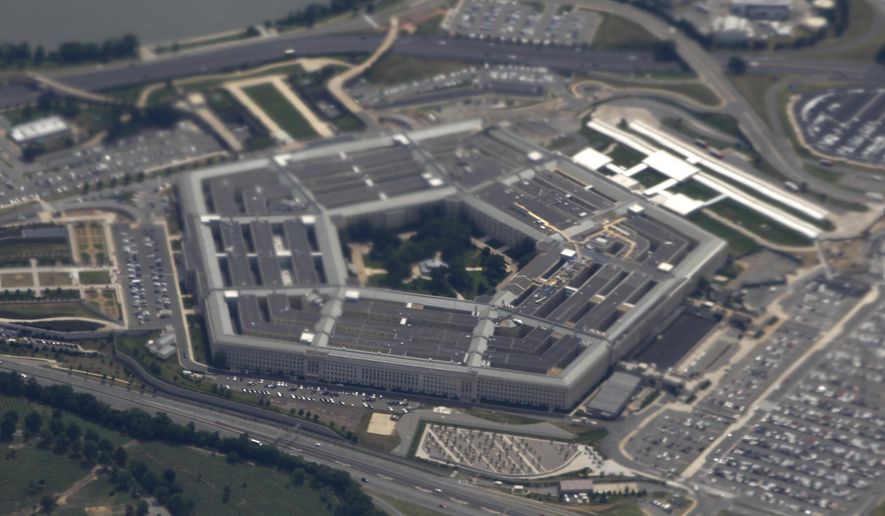A new U.S. approach to waging information warfare operations states that military and civilian defense organizations will rely on Pentagon public affairs officials with support from academics and non-government organizations to counter Chinese and Russian disinformation.
The 24-page report, titled “Strategy for Operations in the Information Environment,” and was made public Friday and signals a new awareness by U.S. security officials of the need to shape the information battlefield and dominate the online propaganda wars in the digital age.
“Make no mistake: America’s competitors and enemies are moving quickly in the information environment, hoping to offset our enduring strategic advantages elsewhere,” Defense Secretary Lloyd Austin said in a preface to the strategy report.
In the report, information warfare operations called “operations in the information environment” — OIE — will join forces with the State Department and joint forces commanders to counter hostile or unfavorable foreign narratives.
All operations will integrate public affairs officers, a vast bureaucracy within the Pentagon, as “a key component of OIE across the competition continuum,” the report said.
Critics of past U.S. government information warfare efforts have said Pentagon public affairs officers are ill-suited for the mission and often share the biases of the news media reporters they assist.
Operations will range from psychological warfare, civil affairs, public affairs, joint electromagnetic spectrum operations, cyber operations and special technical activities and Pentagon “deception activities” — a rare public reference to the U.S. military’s willingness to use deception in its operations.
The strategy calls for four lines of effort in conducting information warfare: people and organizations, programs, policies and governance, and partnerships.
Under partnerships, the strategy report calls for using all government resources and to “consider the viewpoints and activities of academia to include university-affiliated research centers (UARCs), commercial entities, industry, federally funded research and development centers; [non-government organizations]; and state, local, tribal, and territorial governments and agencies.”
The use of university academics is likely to be controversial, considering the largely left-leaning political views of many in American higher education. Still, the report argues that no resource can be overlooked.
“The United States must embrace a whole-of-government approach to the development and employment of Information as an instrument of national power,” the report said.
Offsetting U.S. power
The report’s authors identified China, Russia, Iran, North Korea and terrorist groups as among those employing message-shaping information warfare techniques in a bid to offset American military and other advantages.
“Each is becoming more assertive, using their informational capabilities to deny information accessibility and propagate malign influence, misinformation, disinformation, propaganda and deception activities to influence and disrupt world order,” the report said.
China, for example, is boosting its information capabilities around the world as part of a plan it calls national “rejuvenation,” using intelligence and covert influence operations to support its political and economic goals.
“Beijing understands it must leverage information and apply asymmetric techniques to counter and dominate its adversaries,” the report said.
In the United States itself, China is emulating Russia in exploiting societal divisions through social media and other online platforms to weaken the country, the report said.
“Beijing’s growing efforts to actively exploit perceived U.S. societal divisions using its online personas move it closer to Moscow’s playbook for influence operations,” the report said.
One example of Chinese disinformation involved the 2018 Typhoon Jebi that stranded Chinese and Taiwanese passport holders at Osaka airport. Social media posts circulated criticizing the Osaka-stationed Taiwanese director of the Taipei Economic and Cultural Representatives Office for not helping stranded Taiwan citizens, while the [Chinese] Consulate in Osaka reportedly dispatched buses to support rescue efforts,” the report said.
The online criticism caused the Taiwanese director to commit suicide, based on false, widely disseminated Chinese state media reports that praised Beijing’s response and claimed Taipei had to rely on China to save its nationals. Japanese authorities later discovered that the travelers were forced onto rented buses provided by Beijing even though the airport had arranged travel.
China uses information warfare techniques to bolster its territorial claims to ownership of most of the South China Sea, dismissing competing claims by the Philippines, Indonesia, Vietnam, Brunei, Malaysia and Taiwan. The contested areas include deposits of natural gas, crude oil and significant fishing stocks.
“Since 2010, maps, globes, postcards, T-shirts, video games and at least one blockbuster film (the animated movie “Abominable”) depict or refer to the [Chinese territorial claim].” the report said.
Trying to divide
It’s not just China: Russia is using its intelligence services, proxy actors and a wide range of influence tools to “divide Western alliances and increase its sway around the world while attempting to undermine U.S. global standing, sow discord inside the United States, and influence U.S. voters and decision-making,” the report said.
Russian proxy websites are being used for disinformation and messaging, and Iran and North Korea are using disinformation tactics designed to create regional instability and threaten U.S. interests and allies.
North Korea sent out false information about its missile launches in 2012, first announcing the planned launch and then saying technical issues delayed it. Pyongyang pretended to remove parts of the missile from the launch pad but then launched it as originally scheduled.
The activities deceived U.S. intelligence and limited intelligence collection, the report said.
According to the latest national intelligence threat assessment, foreign states are systematically using digital information and communications technology to wage information warfare. Operations are expected to become “more pervasive, automated, targeted and complex during the next few years.”
The operations “further threatening to distort publicly available information and probably will outpace efforts to protect digital freedoms.”
“This strategy is an important step forward in swiftly and seamlessly synchronizing and integrating our own operations in the information environment so that we can continue to strengthen our deterrence — and position the United States to lead the way toward a 21st-century world that is more secure and free,” Mr. Austin stated.
• Bill Gertz can be reached at bgertz@washingtontimes.com.




Please read our comment policy before commenting.